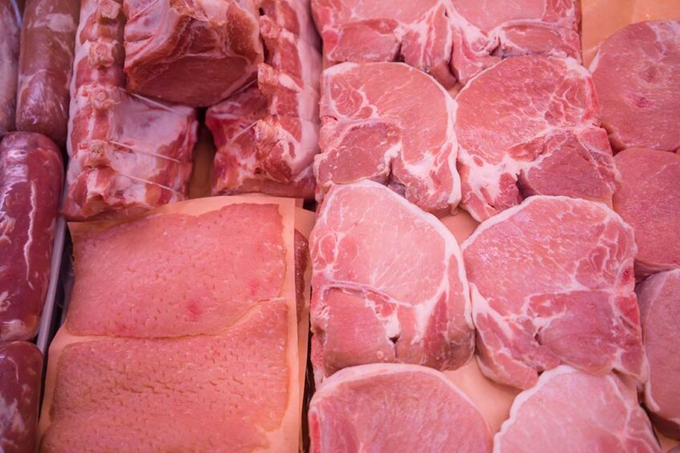November 21, 2025 | 07:41 GMT +7
November 21, 2025 | 07:41 GMT +7
Hotline: 0913.378.918
November 21, 2025 | 07:41 GMT +7
Hotline: 0913.378.918
The good news is that many measures to reduce the environmental impact already exist or are even being implemented.

In the report, Rabobank expects the carbon footprint/kg of pork at farm level to be at least 22% lower in 2030 than in 2020. Photo: Canva
That is the result of a Rabobank study on the carbon footprint of pig meat production. Rabobank expects the pig production chain to become more environmentally friendly.
The main drivers behind the tendency are governmental measures and market developments. The most important basis for all this are the Paris climate agreements of 2020. Many countries agreed that by 2030, greenhouse gas emissions should be at least 55% lower than in 1990. Livestock farming must also contribute to achieving the goals.
In the report, Rabobank expects the carbon footprint/kg of pork at farm level to be at least 22% lower in 2030 than in 2020. That is assuming that the soy used did not cause rain forest disappearance, and dditional use is made of locally produced raw materials. Also, more by-products are used in feed, and the pigs’ better growth and lower feed conversion rates (FCR) contribute to lowering the environmental impact.
Of the total reduction, 8% comes from adjustments already underway, such as the use of green energy and increases in productivity. Some countries have already reached the 22% reduction threshold, the Netherlands being one of them. In that country, the pork chain expects to reduce pork’s carbon footprint by 40-50% in 2030.
Pig feed (production, transport, operations and land use) are responsible for 48% of the CO2 emissions generated by pig production. Emissions from manure, energy and fermentation account for another 40%. The remaining 12% occurs after the pigs leave the farm. Per country, differences are substantial. In the Netherlands, for instance, feed accounts for half to 65% of CO2 emissions. There are also large differences between farms, for example as a result of manure storage.
The 4 most effective ways to reduce the environmental impact of feed are:
Excluding soy for which rain forest has been cleared;
More by-products in the feed; and
Feeding residues from the humane sector.
Better management and genetic progress.
Greenhouse gas emissions caused by manure can be reduced by 80-90% when manure pits are cleaned out daily. That percentage depends on the technique used and the frequency with which the manure is removed from the house. For piglets and finishing pigs, there are various systems of manure pit emptying. For sows, this is less the case. Fresh finisher pig manure is more interesting to ferment in advance than sow manure, as the former contains more biogas.
Feed companies have already been offering feed strategies as well as products with a lower carbon footprint. For instance, Agrifirm’s Feed Forward concept is said to reduce the CO2 footprint of feed by about 15 to 30%, compared to regular finishing feed. Other feed companies also offer similar products. With moisture-rich by-products, it is also possible to reduce the carbon footprint of the feed component by up to 30%, depending on the percentage of compound feed that is being replaced.
The downside of all that is that low-carbon feed is more expensive. For that reason, incentives should be in place to choose those feeds. Ideally, they should come from the market. For example, a bonus in combination with longer-term agreements with retailers. Government subsidies and predictable policies are also important to make pig production more environmentally friendly, Rabobank wrote.
Finally, a transparent system is needed to monitor CO2 emissions with premiums that are in proportion to the performance delivered. After all, pig house modifications usually come with substantial levels of investment. In addition, a system like that will allow for an easy adjustment of rations.
(PP)

(VAN) In a new study published in Trends in Biotechnology, researchers used a gene-editing technology called CRISPR to increase a fungus's production efficiency and cut its production-related environmental impact by as much as 61%- all without adding any foreign DNA.

(VAN) A top official in Beijing’s Cop delegation says China is committed to clean energy – but US’s absence is a problem.

(VAN) The Bangsamoro region’s inflation rate rose slightly to –1.3 percent in October 2025 from –1.5 percent in September, the Philippine Statistics Authority (PSA-BARMM) reported.

(VAN) FAO-led report says protecting and restoring forests is crucial to boosting climate-resilient agriculture, rural livelihoods and global food and water security.

(VAN) Flagship partnership secures additional GBP 16.9 million to strengthen forest monitoring, transparency and country support to 2030.

(VAN) After a turbulent year for international development, the aid and assistance landscape has shifted, with donors rethinking how, where and why they support sustainable development.

(VAN) A new tool for measuring the economic value of farm animal welfare improvements has been developed, potentially transforming how consumers, retailers and the government evaluate animal welfare policies.